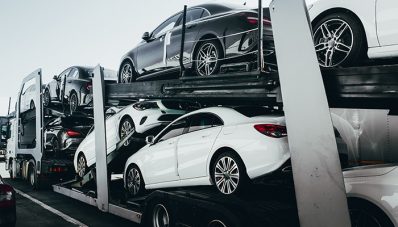
Despite having to scrub its news conference at the now-cancelled Geneva International Motor Show, Volkswagen is making a lot of news this week. We already got an advance look at the next-generation GTI that was to debut in Geneva. Now, falling back on a livestream webcast, VW has filled in the blanks about its plans to launch its first long-range, all-electric model in the U.S.
VW has big plans for electrification, with 50 battery-electric vehicles, or BEVs, due out across its diverse brand portfolio by 2025. Porsche and Audi are already out there. As for the flagship VW brand, it’s set to begin shipping its first model, the ID.3, to European buyers. We Americans will have to wait a bit longer, but, at least, we now know what we’ll be getting.
To no one’s real surprise, it will be a production version of the ID Crozz concept vehicle. But what we weren’t sure of was what it would be called. ID.4, it turns out, and while the automaker is saving some of the hard details for the official debut at the New York International Auto Show a month from now, at least one version will deliver about 310 miles of range.
When it made its debut at the 2017 Shanghai Motor Show, VW described the coupe-like ID Crozz as a “key pillar” of its new electrification strategy. The electrified crossover concept drew power from an 83 kilowatt-hour lithium-ion battery pack mounted in the vehicle’s floor, a move meant to lower its center of gravity and free up space for passengers and cargo.

In production, the ID Crozz-cum ID.4 will use the MEB, a modular, skateboard-like architecture that already underpins the smaller ID.3 hatchback – and which will be used for the vast majority of the dozens of BEVs the Volkswagen Group currently has planned.
The MEB platform is highly flexible and could be configured in a variety of different ways but the initial version of the ID.4 is expected to use a single, rear-mounted electric motor. An all-wheel-drive, twin-motor package is likely to follow, sources have told TheDetroitBureau.com.
The automaker isn’t ready to reveal the size of the battery pack. It’s quite possible VW will eventually offer multiple options, much as Tesla and Nissan do today, and which Ford plans for the upcoming Mustang Mach-E. The original version, however, is expected to deliver as much as 500 kilometers of range in Europe, or about 310 miles. That said, the European WLTP test cycle is notoriously lenient and the EPA would more likely downgrade it by as much as a third. We’ll have to wait until New York to learn more, it appears.
(Check out the all-new version of the VW Golf GTI.)
At the start, the new Volkswagen ID.4 will be assembled alongside the ID.3 hatchback at VW’s first all-electric plant in Zwickau, Germany. But that’s only until the automaker completes an $800 million expansion of its plant in Chattanooga, Tennessee. It is set to become one of two new battery-cars that will be assembled in the U.S. The automaker has so far declined to reveal what the second offering will be.

Early versions of the ID.4 will be imported into the U.S., VW switching over as soon as the Tennessee factory is operational.
The automaker is expected to try to come in at or under the pricing of the Tesla Model Y, though it has not announced a hard figure yet.
The U.S. market, meanwhile, will soon get a second long-range offering from VW, the production version of the ID Buzz. That modern, all-electric take on the classic VW microbus will roll out of a plant in Mexico.
Separately, VW is expected to soon announce plans to end production of the relatively short-range e-Golf as it migrates over to models like the ID.3 and ID.4. Going forward, the automotive giant plans to rely solely on dedicated platforms for its all-electric models, rather than trying to squeeze batteries and motors into a platform designed for use with internal combustion engines.











